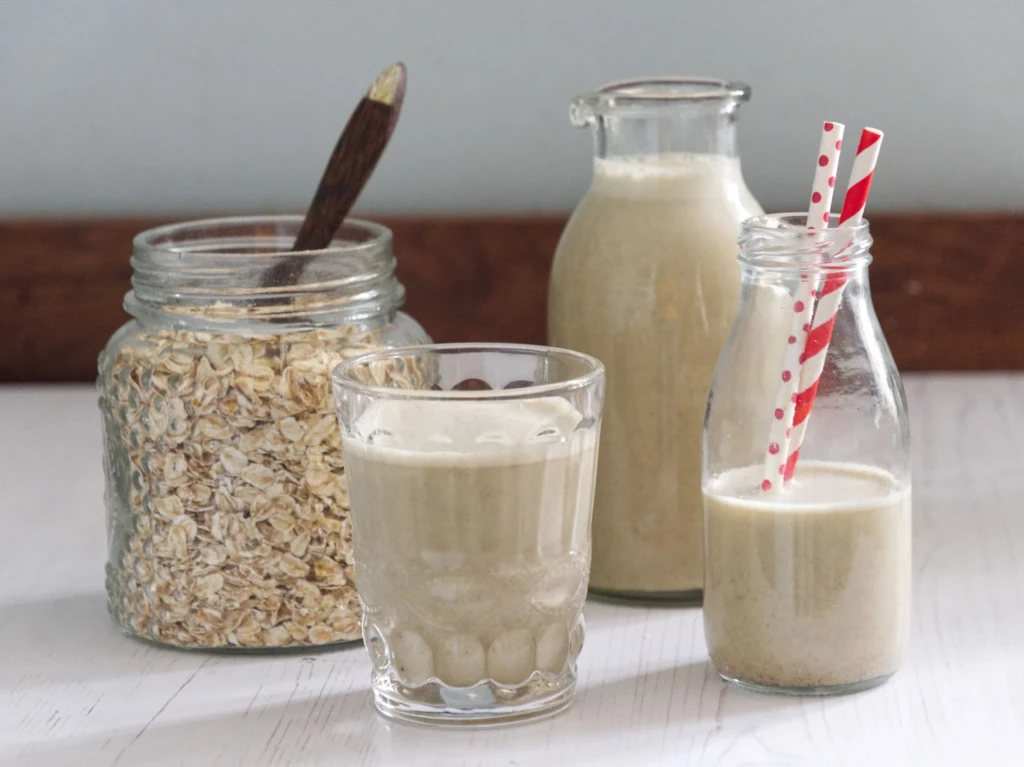Last updated on October 21st, 2025 at 12:55 pm
Many people struggle with acne, a common skin condition, and frequently look for potential causes and treatments. As oat milk and other dairy substitutes have risen in popularity in recent years, concerns have surfaced about oat milk acne. The possibility that these products could be connected to outbreaks of acne also known as oat milk acne.
This article will explore the connection between oat milk and acne (oat milk acne). We will be looking at various scientific opinions and offering advice on whether or not this well-liked dairy replacement may be impacting your skin.
Introduction:
Comprehending Oat Milk Acne:
A popular choice among people opting for a plant-based, dairy-free replacement for traditional cow’s milk is oat milk. In order to match the nutritional profile of cow’s milk, oat milk, typically made from steel-cut or whole oat grains, is often enriched with vitamins and minerals. It is highly regarded for its nutty flavor, creamy texture, and its suitability for people who are intolerant of lactose or vegan
Examining the Connection to Acne:
Despite oat milk is usually considered as a healthy replacement, it is unclear whether it could be an element in cases of acne (oat milk acne). Some suggest that specific ingredients in oat milk may cause skin problems. The glycemic index (GI) of oat milk is one such element. High GI foods are thought to aggravate acne because they raise insulin levels, which in turn affect the formation of oils that aggravate diseases of the skin.

From a scientific standpoint on Oat Milk Acne:
The connection between nutrition and acne or oat milk acne is still being studied, and the results aren’t always clear-cut. Studies have shown that eating meals high in glycemic index (GI) may actually make acne worse, but the effects may differ from person to person. When compared to certain other substitutes made from plants, such rice milk, oat milk has a lower GI.
In addition, oat milk has plenty of elements that may be good for the skin, like the anti-inflammatory beta-glucans. Such features could reduce the possible negative impact of a higher GI, providing a broader view of oat milk’s influence on acne.
Addressing Individual Differences:
It’s crucial to recognise that each person’s body reacts differently to various foods. Some individuals may notice a correlation between their oat milk consumption and acne breakouts. On the other hand others may experience no adverse effects at all.
Factors such as genetics, overall diet, and lifestyle choices all play a role in skin health.

Advice for Treating Acne:
Think about the tips that follow if you think that eating oat milk or any other meal may be aggravated your acne:
- Track Your Daily Intake: Record Any Changes in Your Skin Condition by Keeping a Food Diary. Get a glowing radiant skin.
- Remain Hydrated: Sufficient hydration promotes healthy skin overall and assists in reducing the impact of certain dietary components.
- Speak with a Dermatologist: If your acne is serious or chronic, consult a dermatologist. Specific advice might be given by them depending on your skin’s characteristics and difficulties.
Conclusion:
In the quest for clear skin, it’s essential to approach the potential link between oat milk and acne (oat milk acne) with an open mind. While scientific evidence is not definitive, individual experiences vary.
Pay attention to your body’s responses. Consult with healthcare professionals if needed, and make informed decisions about your diet. Oat milk can be a nutritious addition to many diets, but like any food, moderation and awareness of its potential impact on your skin are key.




